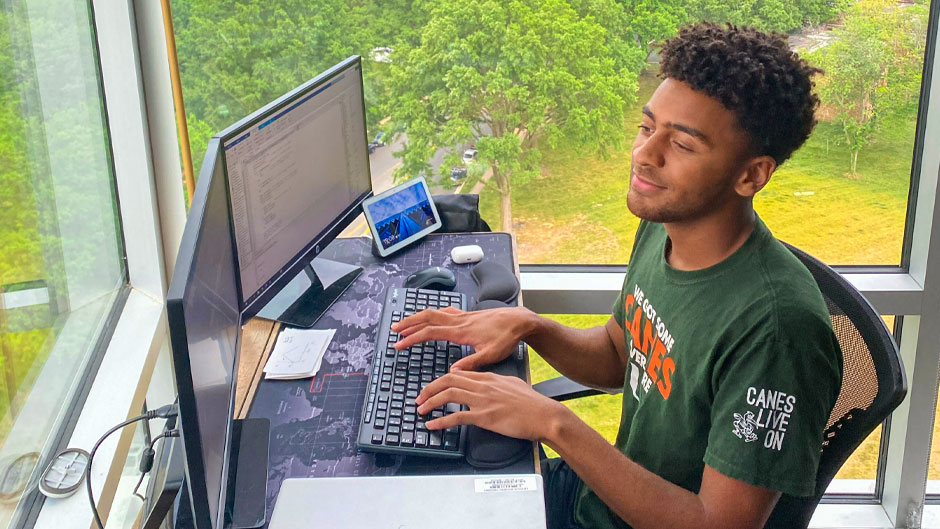Absent the pandemic that has now gained a foothold in this nation, Carnell Bolden would have spent 10 weeks in Brook Park, Ohio, this summer, working side by side with NASA scientists on technology that could one day help aircraft operate more efficiently.
But not even the shutdowns caused by COVID-19 could disrupt Bolden’s big plans—or push him off course from fulfilling his dream of becoming an aeronautical engineer.
From June through early August, the University of Miami College of Engineering student interned virtually at NASA’s Glenn Research Center, working from his Arlington, Virginia, home on a method to measure heat inside jet engines. “Temperatures inside ‘the hot section’ of turbine engines can reach extreme levels,” Bolden said. “But unfortunately, those temperatures limit our ability to take measurements and are not very forgiving to external probes.”
At Glen Research Center, however, engineers have come up with a non-intrusive technique to take such readings, using technology similar to that of a pregnancy ultrasound. “It’s not a direct measurement technique but involves post-processing of ultrasonic data,” explained Arman Mirhashemi, a research aerospace engineer at Glenn’s Turbomachinery and Turboelectric Systems Branch, who mentored Bolden.
Bolden’s research focused on developing numerical data representative of a temperature field of interest. The University of Miami senior also created the codes that converted ultrasonic data to temperature measurements, and he formatted data using machine-learning techniques—allowing the system to measure temperature, density, and velocity fields simultaneously.
While the technology is being developed for gas turbine engines used on most commercial and military aircraft, it could eventually be applied to other machines and areas where the need for such measurements is critical—from rocket engines to the exploration of a planet’s atmosphere, according to Mirhashemi.
“I like to think of my work as helping NASA advance its missions in aeronautics and space exploration,” Bolden said.
He first became intrigued by aviation as a 10-year-old, collecting miniature cast-iron airplane models and often dreaming of becoming a pilot at the controls of a commercial jetliner. As he got older, it wasn’t flying planes that fascinated him, but the technology that makes them work.
His 10-week virtual internship at Glenn taught Bolden lessons he will always be able to fall back on. “Working remotely offered the unique advantage of learning to be adaptable,” he said, “so that when the adversities of life do come, I can respond and progress to be stronger, smarter, and more resilient than ever.”

